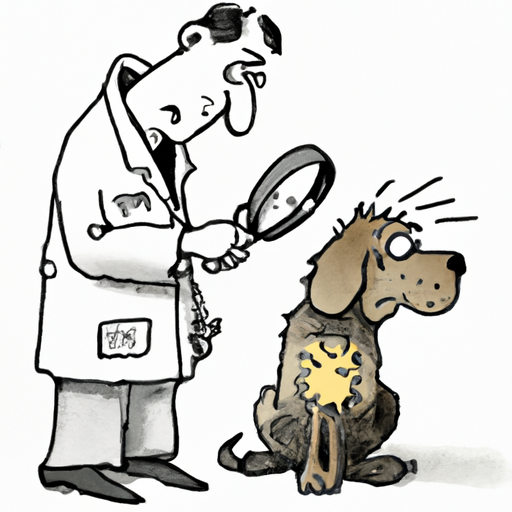As dog owners, we strive to ensure that our furry friends lead comfortable and healthy lives. Despite our best efforts, our dogs can sometimes fall prey to various health issues, with skin infections being one of the most common. Understanding how dogs get skin infections is a critical step towards prevention and effective treatment.
Table of Contents
- Understanding Skin Infections in Dogs
- Causes of Skin Infections in Dogs
- Symptoms of Skin Infections in Dogs
- Prevention and Treatment of Skin Infections in Dogs
- Frequently Asked Questions
Key Takeaways
- Skin infections in dogs can be caused by a variety of factors, including allergies, parasites, and underlying health conditions.
- Recognizing the symptoms of skin infections can lead to early detection and treatment.
- Regular grooming and veterinary check-ups can help prevent skin infections in dogs.
- Treatment for skin infections in dogs typically involves antibiotics or antifungal medications, and in some cases, changes in diet or environment may be necessary.
Understanding Skin Infections in Dogs
Skin infections in dogs, also known as pyoderma, are typically caused by bacteria, yeast, or fungi. These microorganisms are usually harmless and live on your dog’s skin. However, when conditions allow these microbes to multiply uncontrollably, they can cause skin infections.
Skin infections can occur in any breed, age, or health condition of dog, although some dogs may be more predisposed than others due to genetic factors, underlying health conditions, or environmental factors. For more detailed information, you may want to consider reading this guide on skin infections by the American Kennel Club (AKC).
Causes of Skin Infections in Dogs
There are several factors that can lead to skin infections in dogs:
-
Allergies: Dogs can develop allergies to certain foods, substances in their environment, or even parasites. These allergies can cause skin inflammation, which can lead to secondary bacterial or yeast infections.
-
Parasites: Fleas, mites, and ticks can cause skin irritation and inflammation, leading to secondary skin infections.
-
Underlying Health Conditions: Certain health conditions, such as hypothyroidism or Cushing’s disease, can weaken a dog’s immune system and make them more prone to skin infections.
-
Poor Nutrition: A diet lacking in essential nutrients can result in a weakened immune system and poor skin health, both of which can increase the risk of skin infections.
You can read more about the causes and different types of dog skin infections on OneTopDog.
Symptoms of Skin Infections in Dogs
Recognizing the symptoms of skin infections can help you catch the problem early and seek appropriate treatment. Common symptoms include:
- Redness or inflammation
- Itching, scratching, or rubbing
- Sores, ulcers, or pustules
- Hair loss
- Changes in skin color or texture
- Unpleasant odor
If you notice any of these symptoms, it is important to consult with your veterinarian to determine the cause and appropriate treatment plan.
Prevention and Treatment of Skin Infections in Dogs
Preventing skin infections in dogs often involves regular grooming, a balanced diet, and routine veterinary check-ups. Regularly checking your dog for parasites can also help prevent skin infections caused by fleas, ticks, or mites.
When it comes to treatment, the approach will depend on the cause and severity of the infection. Antibiotics or antifungal medications are commonly used to treat bacterial or yeast infections, respectively. In some cases, changes in diet, environment, or grooming habits may be necessary.
Remember that early detection and treatment can help prevent serious complications and discomfort for your pet. For a comprehensive guide on dog skin care, check out this post on OneTopDog.
Frequently Asked Questions
1. Can skin infections in dogs be prevented?
Yes, regular grooming, a balanced diet, and routine veterinary check-ups can help prevent skin infections in dogs.
2. Are skin infections in dogs contagious to humans?
Some skin infections, particularly those caused by certain types of fungi, can be transmitted to humans. It’s always best to consult with a veterinarian if you have any concerns.
3. Can I use human medication to treat my dog’s skin infection?
No, it’s essential to consult with a veterinarian before administering any medication to your dog. Certain human medications can be harmful or even fatal to dogs.
4. How long does it take for a dog’s skin infection to heal?
The healing process can vary depending on the severity of the infection and the treatment provided. Generally, you should see improvement within a week or two of treatment.
Understanding how dogs get skin infections can help you take steps to prevent these conditions and seek prompt treatment when necessary. Remember, our dogs rely on us to keep them healthy and comfortable, so staying informed is one of the best ways we can care for them. For more information about dog health and wellness, visit OneTopDog.



